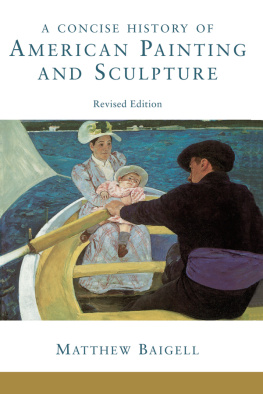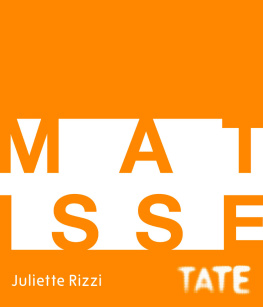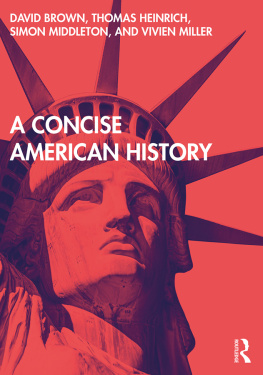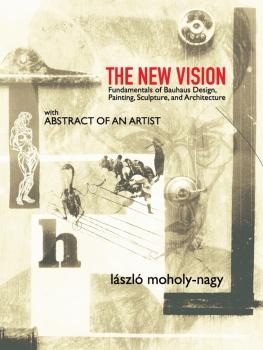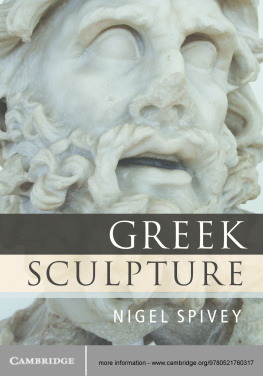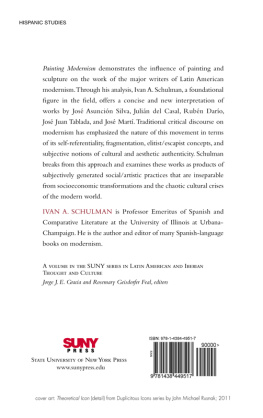Baigell - A Concise History Of American Painting And Sculpture
Here you can read online Baigell - A Concise History Of American Painting And Sculpture full text of the book (entire story) in english for free. Download pdf and epub, get meaning, cover and reviews about this ebook. City: New York;London, year: 2019, publisher: Taylor & Francis Ltd;Rotledge, genre: Science. Description of the work, (preface) as well as reviews are available. Best literature library LitArk.com created for fans of good reading and offers a wide selection of genres:
Romance novel
Science fiction
Adventure
Detective
Science
History
Home and family
Prose
Art
Politics
Computer
Non-fiction
Religion
Business
Children
Humor
Choose a favorite category and find really read worthwhile books. Enjoy immersion in the world of imagination, feel the emotions of the characters or learn something new for yourself, make an fascinating discovery.
A Concise History Of American Painting And Sculpture: summary, description and annotation
We offer to read an annotation, description, summary or preface (depends on what the author of the book "A Concise History Of American Painting And Sculpture" wrote himself). If you haven't found the necessary information about the book — write in the comments, we will try to find it.
Baigell: author's other books
Who wrote A Concise History Of American Painting And Sculpture? Find out the surname, the name of the author of the book and a list of all author's works by series.
A Concise History Of American Painting And Sculpture — read online for free the complete book (whole text) full work
Below is the text of the book, divided by pages. System saving the place of the last page read, allows you to conveniently read the book "A Concise History Of American Painting And Sculpture" online for free, without having to search again every time where you left off. Put a bookmark, and you can go to the page where you finished reading at any time.
Font size:
Interval:
Bookmark:
A CONCISE HISTORY OF AMERICAN PAINTING AND SCULPTURE (REVISED EDITION).
First edition published 1984 by Icon Editions
Published 1996 by Westview Press
Published 2018 by Routledge
711 Third Avenue, New York, NY 10017, USA
2 Park Square, Milton Park, Abingdon, Oxon OX14 4RN
Routledge is an imprint of the Taylor & Francis Group, an informa business
Copyright 1984, 1996 by Matthew Baigell.
All rights reserved. No part of this book may be reprinted or reproduced or utilised in any form or by any electronic, mechanical, or other means, now known or hereafter invented, including photocopying and recording, or in any information storage or retrieval system, without permission in writing from the publishers.
Notice:
Product or corporate names may be trademarks or registered trademarks, and are used only for identification and explanation without intent to infringe.
Designed by Abigail Sturges
ISBN 13: 978-0-06-430986-8 (pbk)

In this survey I have concentrated on that part of American art which developed from northern and western European traditions in order to sustain the narrative flow and to keep the text from becoming an unwieldy collection of chapters on quite different art traditions and styles. Within these guidelines, the first chapter begins with a discussion of seventeenth-century art along the eastern seaboard, and the last chapter includes sections on current realistic, process, and technological art. I would have liked to discuss many more interesting and provocative artists, but constraints of space prevented me from considering all but the most historically important and intrinsically significant.
When preparing the Concise History , I resisted imposing a scheme on American art, such as finding its motivating impulses in the search for the Idea or the Fact, or discussing whether American art is basically idealistic, realistic, expressionistic, or something else. And the notion of finding a quintessentially American art in a pluralistic society seems too reductive to make much sense, anyway.
The chapters are arranged chronologically, and each generally follows the same organizational sequence. But deviations occur. In some chapters, for instance, sculpture is placed at the end, or left out entirely or integrated with discussions on painting. Short introductory sections in each chapter vary, depending on the ways the material seemed to present itself, and social and cultural observations appear, to a greater or lesser degree, when these seemed relevant. From time to time I suggest continuities of themes, ideas, and images. Occasionally contrasts or comparisons are made between artists of the same or of different centuries to point out continuities or discontinuities. My concern was to write a book that could be read as a continuous history rather than a series of separate chronological essays.
Illustrations have been keyed directly to the text, but in some instances photographs of particular works could not be obtained because of excessive costs, special restrictions, or lack of availability. Some favorites, therefore, could not be reproduced. Furthermore, since certain ideas were better explained through the works of a particular artist, I did not always follow the rule of thumb that an artists importance is measured by the number of reproductions of his or her works. And indeed sometimes a lesser-known work by a particular artist might explain or make a point more effectively than a notable work by the same artist.
In organizing and writing a book of this type, I had to rely on the research of dozens of scholars. To them I owe an extraordinary debt of gratitude for keeping me as up-to-date as possible and for making the task of synthesis easier than it might have been. Specialists will quickly recognize my sources. Some are quoted directly, others are paraphrased. Because of the incredible number of books, articles, and exhibition catalogues that appear almost daily, I have, no doubt, overlooked some important items. For these oversights, I plead human limitations and fallibilities. I do want to say, however, that the ideas and formulations of Renee Baigell appear on more pages than those of probably anybody else, and to her I acknowledge the warmest possible affection and respect. Of course I assume complete responsibility for my interpretations and for factual accuracy.
I want to thank Cass Canfield, Jr., of Harper & Row for his always generous and continued support. He is everything an author could hope for in an editor. I also want to express my appreciation to Bitite Vinklers for copy-editing the text, and to Leah Baigell, Naomi Baigell, and Jennifer Toher for help in many administrative details.
***
For this new edition I have made corrections, revisions, and additions to the text and bibliography and added 13 new illustrations.
M. B.
March 1996
International Presence
F EW would say that the decades considered in this chapter were tranquil times. World War II dominated the first half of the 1940s, and the Cold War between the United States and the Soviet Union dispirited the second half. With the start of the Korean War in 1950, it seemed as if full-scale international hostilities might resume again. Furthermore, several events horrified the imagination of many during those years: the irrational hatreds set loose in the 1930s, which resulted in the planned and persistent massacres of entire groups of people; the use of atomic warfare; the presence or imminence of international nuclear warfare; and the failure of various political systems to cope with, let alone control, the never-ending economic and political crises of modern civilization. Whichever explanations might be offeredcontradictions within the capitalist system, confrontations between democracy and fascism or between capitalism and communism, or the sheer irrationality of contemporary lifenone provided solace to the artist. Although in a material sense American artists were obviously not as affected by the world situation as their European counterparts, their art, especially through the 1940s, reflected a loss of faith in the values of Western society.
Young artists searching for a viable mode of visual discourse discovered few models to follow in the late 1930s and early 1940s. Significant leadership could not be expected from the surviving early-twentieth-century realists and modernists. Nor were Regionalists and Social Realists able to find or to justify a vital subject matter in the face of world conditions. Studying the American scene and the American past as ways to avoid confronting the international present was, by this time, an irrelevant and provincial exercise. On the left, the destruction of the Communist dream by Stalin brought ideological beliefs under extreme suspicion. The kind of abstraction associated with Mondrian and the American Abstract Artists was considered too remote and utopian to counter the exigencies of immediate existence. Narrative Surrealism, which never had wide appeal among American artists, found few adherents, although several artists, such as George Tooker and Robert Vickrey, explored disconcerting themes in sharp-focused realistic styles through the 1940s and 1950s (see below).
In retrospect, the most interesting and advanced art to emerge in America in the 1930s and 1940s, one which paralleled developments in literature and criticism, was that which turned artists in upon their own imaginations. That is, the kind of art that seemed to offer the greatest possibilities for artistic growth was that which showed no interest in altering the social and political environment or in relating to the world of middle-class culture. Sources for such an art were found most generally in earlier modernist art movements, but, more specifically, in Surrealist automatism, in the psychological theories of Freud and Karl Jung, and in the art of so-called primitive peoples. By evolving an art based on these literary and artistic sources, an artist could remain personally and artistically radical, but shun the political and literary orthodoxies of the left or the right. In this way, he or she could concentrate more directly on artistic expression as well as on his or her own moral concerns as these related to the art-making process rather than to world events. Artistic experimentation and personal freedom, according to this point of view, seemed more basic than social action to the growth of a humane society. As a result, artists turned to instinct rather than ideas as a creative force, to working with and adjusting to notions of doubt rather than certainty, and of facing directly the existence of tragedy in human life and the concept of the tragic sense of life.
Font size:
Interval:
Bookmark:
Similar books «A Concise History Of American Painting And Sculpture»
Look at similar books to A Concise History Of American Painting And Sculpture. We have selected literature similar in name and meaning in the hope of providing readers with more options to find new, interesting, not yet read works.
Discussion, reviews of the book A Concise History Of American Painting And Sculpture and just readers' own opinions. Leave your comments, write what you think about the work, its meaning or the main characters. Specify what exactly you liked and what you didn't like, and why you think so.

